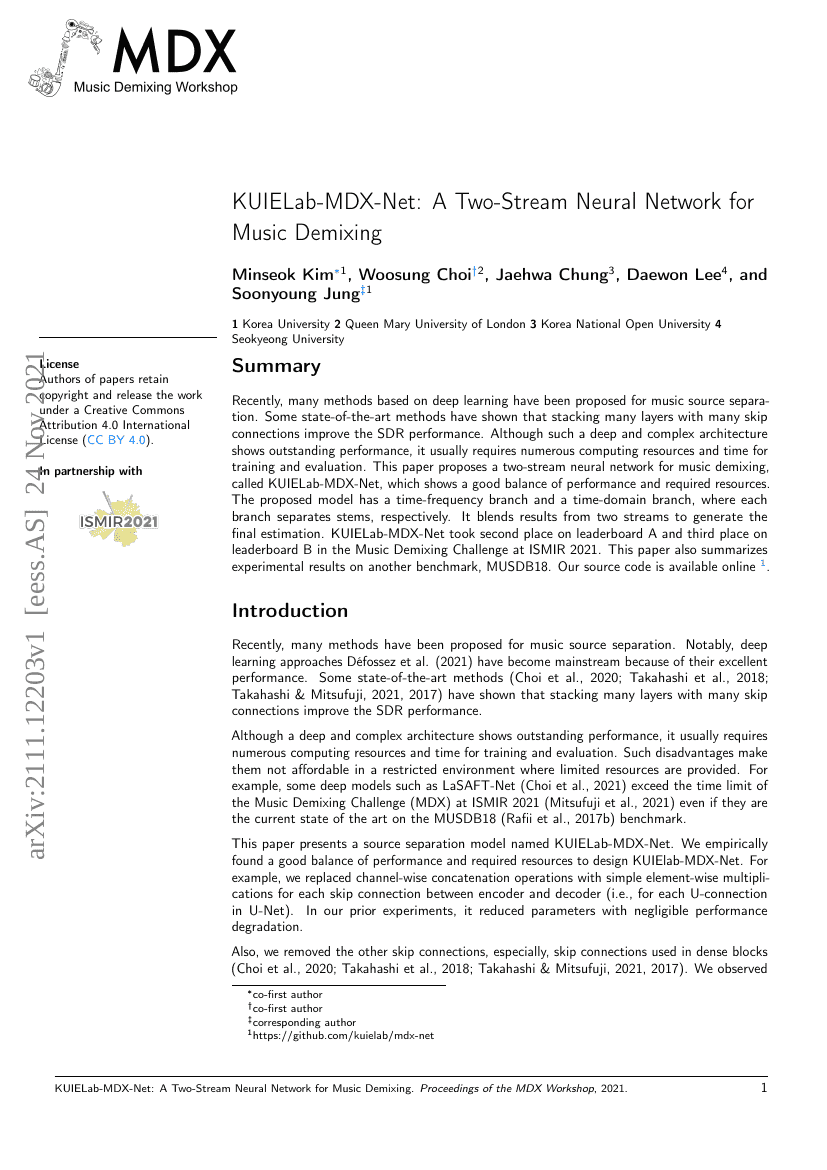Command Palette
Search for a command to run...
Minseok Kim Woosung Choi Jaehwa Chung Daewon Lee Soonyoung Jung

Abstract
Recently, many methods based on deep learning have been proposed for music source separation. Some state-of-the-art methods have shown that stacking many layers with many skip connections improve the SDR performance. Although such a deep and complex architecture shows outstanding performance, it usually requires numerous computing resources and time for training and evaluation. This paper proposes a two-stream neural network for music demixing, called KUIELab-MDX-Net, which shows a good balance of performance and required resources. The proposed model has a time-frequency branch and a time-domain branch, where each branch separates stems, respectively. It blends results from two streams to generate the final estimation. KUIELab-MDX-Net took second place on leaderboard A and third place on leaderboard B in the Music Demixing Challenge at ISMIR 2021. This paper also summarizes experimental results on another benchmark, MUSDB18. Our source code is available online.
Code Repositories
Benchmarks
| Benchmark | Methodology | Metrics |
|---|---|---|
| music-source-separation-on-musdb18 | KUIELab-MDX-Net | SDR (avg): 7.54 SDR (bass): 7.86 SDR (drums): 7.33 SDR (other): 5.95 SDR (vocals): 9.00 |
| music-source-separation-on-musdb18-hq | KUIELab-MDX-Net | SDR (avg): 7.47 SDR (bass): 7.83 SDR (drums): 7.20 SDR (others): 5.90 SDR (vocals): 8.97 |
Build AI with AI
From idea to launch — accelerate your AI development with free AI co-coding, out-of-the-box environment and best price of GPUs.